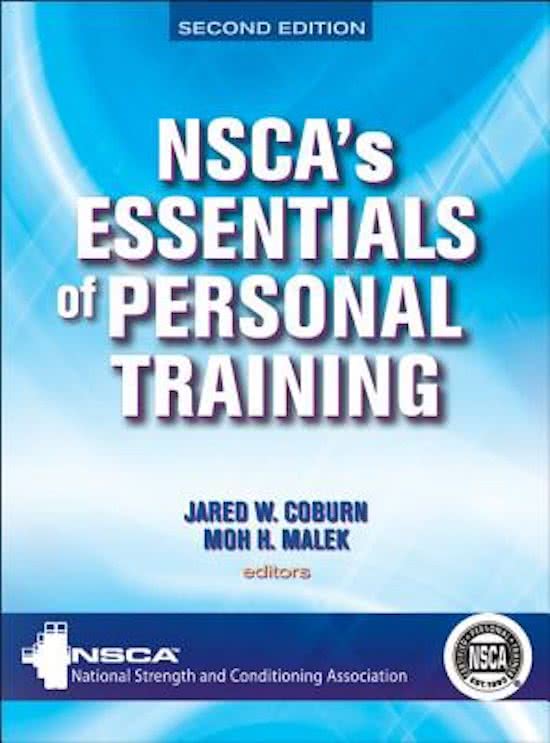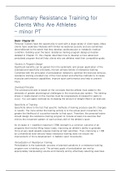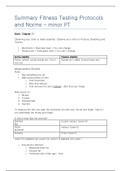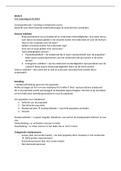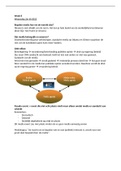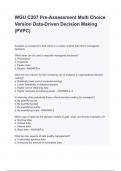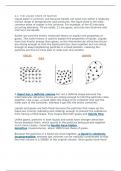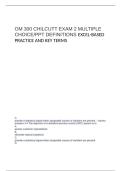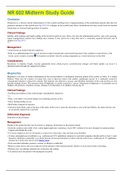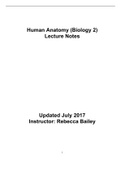Summary Resistance Training for
Clients Who Are Athletes
– minor PT
Book: Chapter 23
Personal Trainers have the opportunity to work with a large variety of client types. Many
clients have sedentary lifestyles with limited recreational pursuits and are sometimes
deconditioned to the extent that they develop cardiovascular or metabolic medical
condition. Building upon the basic resistance training program design principles
detailed in Chapter 15, this chapter describes how to develop a more advanced
periodised program that will help clients who are athletes meet their competitive goals.
Factors in Program Design
Significant benefits can be gained from the systematic and proper application of the
overload and specificity principles, the two primary tenets of resistance training.
Combined with the principles of periodization needed to optimize the exercise stimulus,
resistance training provided one of the most potent and effective methods to increase
muscular performance capabilities, improve sport performance and help to prevent
injury.
Overload Principle
The overload principle is based on the concepts that the athlete must adapt to the
demands of greater physiological challenges to the neuromuscular system. The training
stress or loads placed on the muscles must be progressively increased for gains to
occur. You can apply overload by increasing the amount of weight lifted in an exercise.
Specificity of Training
Specificity refers to the fact that specific methods of training produce specific changes
or results. The more similar the training activity is to the actual sport movement, the
greater the likelihood of a positive transfer to that sport. Therefore, the personal trainer
should design the resistance training program to include at least one exercise that
mimics the movement pattern of each primary skill of the athlete’s sport.
An increase in 1 repetition maximum (1RM) strength is a common outcome of all
programs that involve lifting heavy loads, improving an athlete’s ability to generate
force at very rapid speeds requires training at high velocities. Thus, improving a 1 RM
by conventional slow velocity heavy resistance training does not ensure the
improvement of force development in ballistic sport movements.
Periodization of Resistance Training
Periodization is the systematic process of planned variations in a resistance training
program over a training cycle. The primary goals of periodization are met by
appropriately manipulating volume and intensity and by effectively selecting exercises.
, One of the primary advantage of this training approach is the reduced risk of
overtraining due to the purposeful time devoted to physical and mental recovery.
Cycles and Phases
Periodised programs are typically divided into three distinct cycles.
1. The macrocycle is the largest division, which typically constitutes an entire
training year but may also be a period of up to four years.
2. The mesocycle, which is comprise out of the macrocycle, divided into several
weeks to a few months. The number of mesocycles is dependent on the goals
of the athletes and, if applicable, the number of sport competitions contain
within the period.
3. The microcycle, which is divided out of the mesocycle, that can range from one
week to four weeks, which includes daily and weekly training variations.
Stone 1981: Divided a resistance training program into 5 mesocycles, each with a
primary goal or focus:
Hypertrophy phase: to develop a muscular and metabolic base for more intense
future training using a resistance training program that includes sport-specific
or non-sport specific exercises performed at a high volume and a low intensity
Strength phase: to increase maximal muscle force by following a resistance
training program that focuses on sport-specific exercises of moderate volume
and intensity
Strength/Power phase: to increase the speed of force development and power
by integrating sport-specific power/explosive exercises of low volume and high
intensity
Competition or peaking phase: to attain peak strength and power by performing
a very high-intensity and very low-volume sport-specific resistance training
program
Active rest phase: to allow physiological and mental recovery through limited
low-volume and low-intensity resistance training or the performance of physical
activities unrelated to one’s sport
It has been found that people can achieve greater strength and power gains by
repeating this set of five mesocycles more than once per year. The concept of variation
is a vital factor that explains the advantage of performing the entire set of training
phases three times in a single year instead of only once.
Variation in Exercise Selection
Changes in exercise may be made every two or three weeks, or some exercises can be
varied on an every other training session basis. Still, certain core exercises need to be
maintained throughout the training program so that progress in the major exercises can
be continuously made. So, variations in exercise selection for the same muscle group
result in greater increases in strength and power than a program with no variation in
exercise.
Clients Who Are Athletes
– minor PT
Book: Chapter 23
Personal Trainers have the opportunity to work with a large variety of client types. Many
clients have sedentary lifestyles with limited recreational pursuits and are sometimes
deconditioned to the extent that they develop cardiovascular or metabolic medical
condition. Building upon the basic resistance training program design principles
detailed in Chapter 15, this chapter describes how to develop a more advanced
periodised program that will help clients who are athletes meet their competitive goals.
Factors in Program Design
Significant benefits can be gained from the systematic and proper application of the
overload and specificity principles, the two primary tenets of resistance training.
Combined with the principles of periodization needed to optimize the exercise stimulus,
resistance training provided one of the most potent and effective methods to increase
muscular performance capabilities, improve sport performance and help to prevent
injury.
Overload Principle
The overload principle is based on the concepts that the athlete must adapt to the
demands of greater physiological challenges to the neuromuscular system. The training
stress or loads placed on the muscles must be progressively increased for gains to
occur. You can apply overload by increasing the amount of weight lifted in an exercise.
Specificity of Training
Specificity refers to the fact that specific methods of training produce specific changes
or results. The more similar the training activity is to the actual sport movement, the
greater the likelihood of a positive transfer to that sport. Therefore, the personal trainer
should design the resistance training program to include at least one exercise that
mimics the movement pattern of each primary skill of the athlete’s sport.
An increase in 1 repetition maximum (1RM) strength is a common outcome of all
programs that involve lifting heavy loads, improving an athlete’s ability to generate
force at very rapid speeds requires training at high velocities. Thus, improving a 1 RM
by conventional slow velocity heavy resistance training does not ensure the
improvement of force development in ballistic sport movements.
Periodization of Resistance Training
Periodization is the systematic process of planned variations in a resistance training
program over a training cycle. The primary goals of periodization are met by
appropriately manipulating volume and intensity and by effectively selecting exercises.
, One of the primary advantage of this training approach is the reduced risk of
overtraining due to the purposeful time devoted to physical and mental recovery.
Cycles and Phases
Periodised programs are typically divided into three distinct cycles.
1. The macrocycle is the largest division, which typically constitutes an entire
training year but may also be a period of up to four years.
2. The mesocycle, which is comprise out of the macrocycle, divided into several
weeks to a few months. The number of mesocycles is dependent on the goals
of the athletes and, if applicable, the number of sport competitions contain
within the period.
3. The microcycle, which is divided out of the mesocycle, that can range from one
week to four weeks, which includes daily and weekly training variations.
Stone 1981: Divided a resistance training program into 5 mesocycles, each with a
primary goal or focus:
Hypertrophy phase: to develop a muscular and metabolic base for more intense
future training using a resistance training program that includes sport-specific
or non-sport specific exercises performed at a high volume and a low intensity
Strength phase: to increase maximal muscle force by following a resistance
training program that focuses on sport-specific exercises of moderate volume
and intensity
Strength/Power phase: to increase the speed of force development and power
by integrating sport-specific power/explosive exercises of low volume and high
intensity
Competition or peaking phase: to attain peak strength and power by performing
a very high-intensity and very low-volume sport-specific resistance training
program
Active rest phase: to allow physiological and mental recovery through limited
low-volume and low-intensity resistance training or the performance of physical
activities unrelated to one’s sport
It has been found that people can achieve greater strength and power gains by
repeating this set of five mesocycles more than once per year. The concept of variation
is a vital factor that explains the advantage of performing the entire set of training
phases three times in a single year instead of only once.
Variation in Exercise Selection
Changes in exercise may be made every two or three weeks, or some exercises can be
varied on an every other training session basis. Still, certain core exercises need to be
maintained throughout the training program so that progress in the major exercises can
be continuously made. So, variations in exercise selection for the same muscle group
result in greater increases in strength and power than a program with no variation in
exercise.

